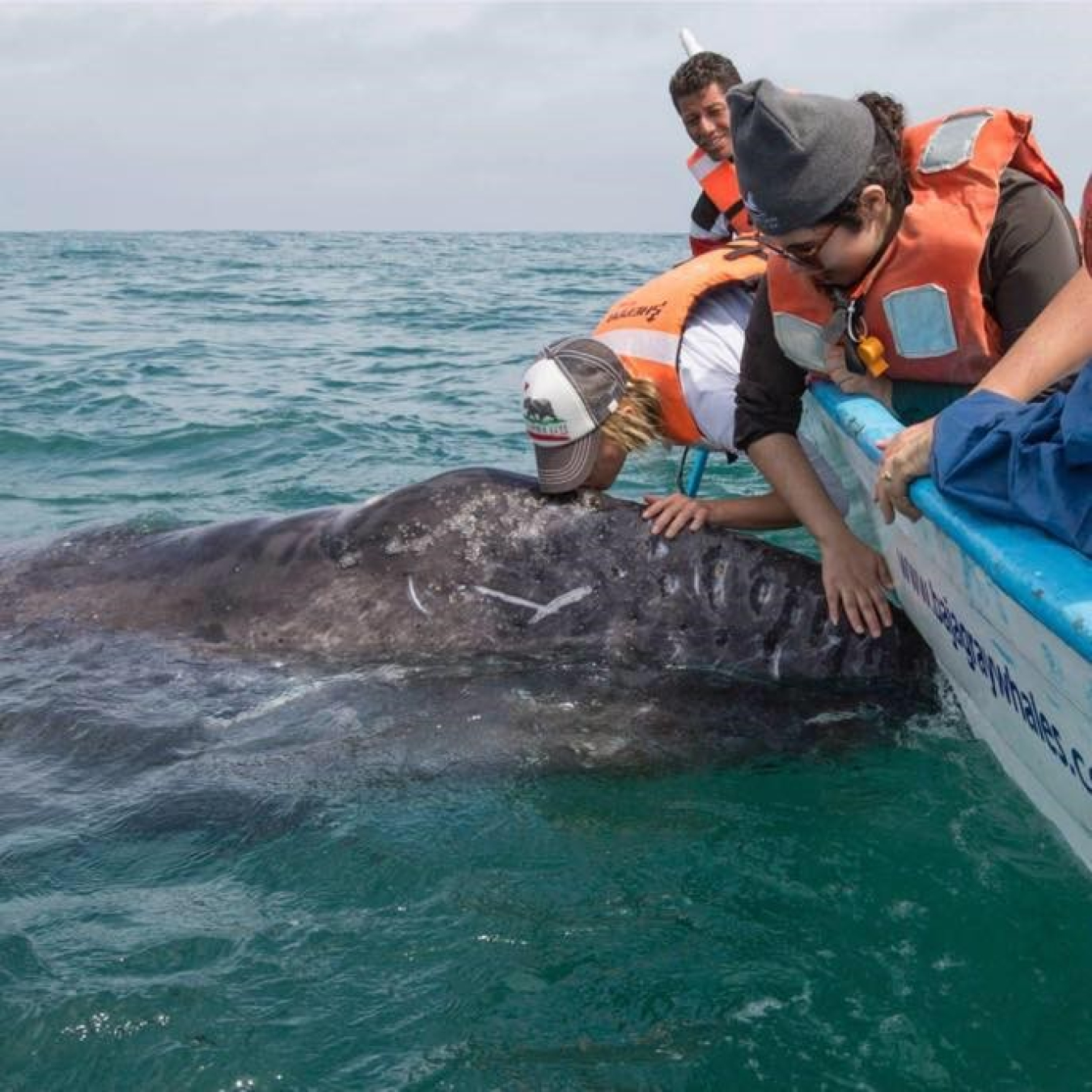Learn why Alicia Amerson loves her job as the program manager for the Triton Initiative, Pacific Northwest National Laboratory.
June 16, 2020June is Ocean Month, and to celebrate STEM Rising is sharing profiles of Energy Department staff in ocean-related careers. Meet Alicia Amerson. Alicia Amerson is the program manager for the Triton Initiative, which is facilitated by Pacific Northwest National Laboratory. Alicia is a published marine biologist and certified Project Management Professional project manager. She earned a master’s degree in Marine Conservation and Biodiversity from Scripps Institution of Oceanography and a BS in Biology from Eastern New Mexico University.
In 2015, she completed an international research project to review whale-watching sustainability along the west coast of North America. Over the past 16 years, Alicia worked on diverse projects from environmental remediation projects at Los Alamos National Laboratory, to launching and producing a wildlife conservation podcast. With the Triton Initiative, the team’s focus is on research and building technology for environmental monitoring around marine renewable energy devices that use the ocean waves and tides to generate energy. The Triton Initiative does a majority of our research at the Marine Sciences Laboratory located in Sequim, Washington.

What’s your favorite fact about the ocean?
The largest animal that has ever lived on our planet is a blue whale. Successful implementation of the U.S. Marine Mammal Protection Act provided protections for the blue whales from hunting. Today we are able to see blue whales foraging off the coast of California.
What do you do to celebrate Ocean Month?
Oceans day is one of my favorite days of the year. Previously I have spent June 8th at the State Capitol Building in Sacramento, California talking to legislators about the importance of the ocean as a California Sea Grant Fellow. Other years I spent the day picking up marine debris on the coast with friends and my dogs. This month, I am sharing my love for the ocean through conservation photojournalism online where I tell the story behind my wildlife photographs to connect people to the ocean and all that it does for us and the home it provides for wildlife. I am grateful to have a whole month to celebrate the ocean rather than one day this year.
What inspired you to work in water power?
The perils faced by the ocean became more apparent to me long after I had made a career in environmental remediation. The desire to become a marine biologist was a childhood dream of mine, so I thought I would take this skillset and apply it to ocean issues. Like many small kids, when I applied to Scripps Institution of Oceanography, I wanted to study whales. I also wanted to conduct an international research project. My career has not been a direct path to water power. My affinity for wildlife and the ocean is at the core of why I do what I do—it’s the piece I connect with and part of the legacy I want to leave behind. My inspiration comes from the team of people I work with and who make up the Triton Initiative. They are brilliant scientists and engineers who spend their days thinking of ways to address various stressors caused by marine renewable energy devices in the ocean environment and how to minimize and eliminate impacts to wildlife. Currently, in the U.S. waters there are not many MRE devices installed because of the high cost associated to developing baselines and monitoring the stressors. This makes our efforts difficult to test. Also, there are many gaps in the data because the ocean and coastlines are incredibly diverse. We know that ocean ecosystems change throughout the water column, and that the living organisms on the surface of the water are different from the ones who live on the seabed. Understanding this complexity is at the heart of what we do as a team. The research and engineered solutions we design provide vital data to support regulators who approve of monitoring programs and technology, and we help developers create new solutions to reduce environmental effects and monitor marine energy devices.
What do you do in your job?
My career focus is to advance marine renewable energy projects that benefit humans, wildlife, and our ecosystems. I work to cultivate and develop strong relationships with my team and our partnerships, and I use science communication tools to share stories that advance our research. On a day-to-day basis, my role inside Triton is to coordinate the program work and teams, to lead the development of milestone and deliverables, to manage the scope and schedule, and to track the program budget. As a program manager, I track the triple constraint (scope, schedule, budget) for all the various projects that fall under the Triton program.
What books or movies about the ocean do you recommend?
War of the Whales by Joshua Horwitz
The Soul of an Octopus: A Surprising Exploration into the Wonder of Consciousness by Sy Montgomery
Pacific by Simon Winchester
Song for the Blue Ocean by Carl Safina
Demon Fish by Juliet Eilperin
No Way Home: The Decline of the World’s Great Animal Migration by David Wilcove
Eye of the Albatross by Carl Safina
Overfishing by Ray Hilborn
Field Notes from a Catastrophe by Elizabeth Kolbert
If you choose to work in an ocean-related career, know that there is enough room for you and your ideas. This path can be as lucrative as you want and we need more folks like you to join us. Collectively, the ocean professional community is a group of supportive folks and I have yet to find someone who said they regretted this choice.
Read more Ocean Month profiles and get information about STEM Rising at www.energy.gov/STEM

